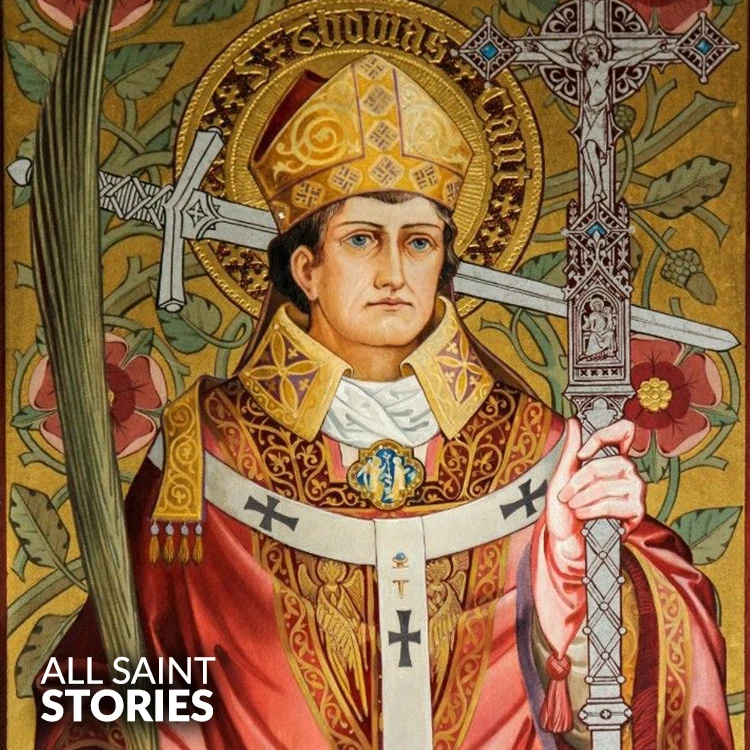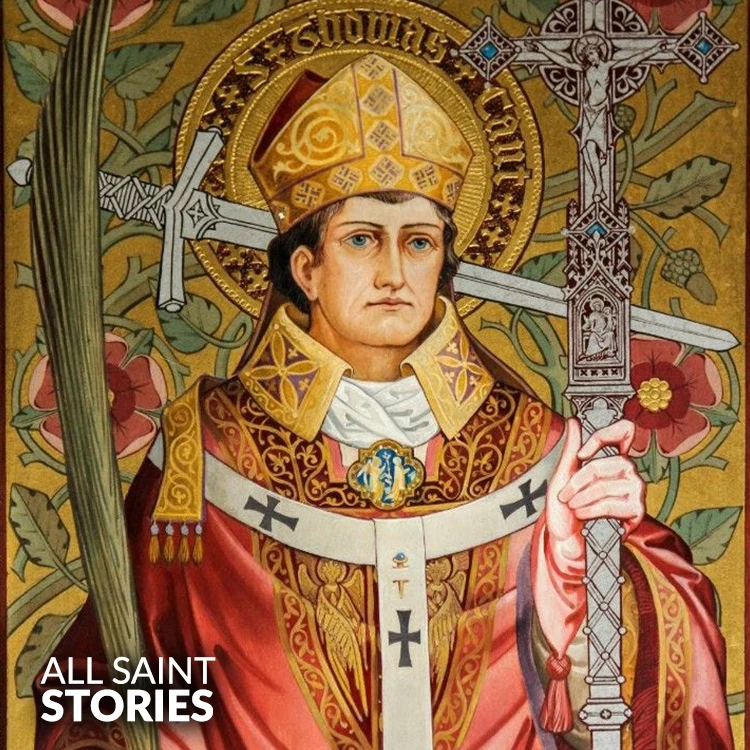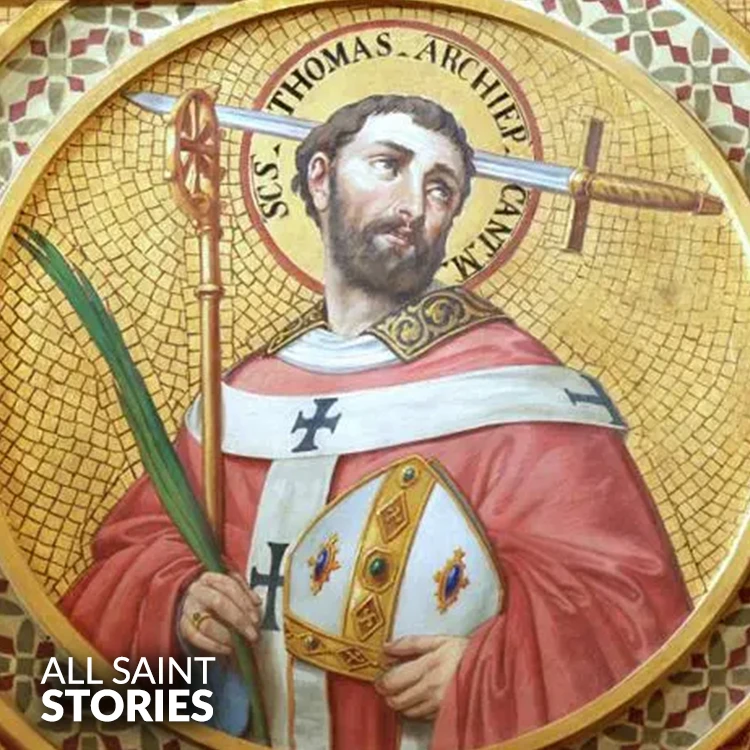Saint Thomas Becket, martyr for justice and defender of the faith, pray for us, that we may always stand firm in our convictions and seek the truth with courage and humility. Intercede for us before God, that we may be strengthened in our faith and remain faithful to Christ, no matter the cost. Through your example, may we live with integrity and work for peace and justice in our world. Amen.
ST. THOMAS BECKET BISHOP (MARTYR)
ST. THOMAS BECKET BISHOP (MARTYR)

St. Thomas Becket, Archbishop of Canterbury, was a staunch defender of the Church against King Henry II’s interference. Once a close friend of the king, he became his most formidable opponent when he resisted royal encroachment on Church authority. His unwavering faith led to his brutal assassination in Canterbury Cathedral by knights loyal to the king. His martyrdom made him one of England’s most revered saints.
Thomas Becket was born in London in 1119 or 1120 to a prosperous Norman merchant family. He received an excellent education, studying in Paris before serving as a clerk under Archbishop Theobald of Canterbury. Recognizing his talents, Theobald sent Thomas to study canon law in Italy and France, after which he was ordained a deacon and later appointed Archdeacon of Canterbury.
In 1155, King Henry II, seeking a loyal and capable administrator, appointed Thomas Becket as Chancellor of England. The two men became close allies and friends, working together to strengthen royal authority. However, when Henry appointed Becket as Archbishop of Canterbury in 1162, their relationship changed drastically. Becket, now deeply committed to the Church, opposed the king’s attempts to control ecclesiastical matters, particularly the controversial "Constitutions of Clarendon," which sought to limit the Church’s independence.
Becket’s resistance led to a bitter conflict with Henry II, forcing him into exile in France for six years. In 1170, a fragile reconciliation allowed him to return to England, but tensions remained high. On December 29, 1170, four knights, believing they were acting on the king’s wishes, stormed Canterbury Cathedral and brutally murdered Becket at the altar. His last words reportedly were, “For the name of Jesus and the protection of the Church, I am ready to die.”
The shocking nature of his martyrdom turned Becket into an immediate saint in the eyes of the people. Pilgrims flocked to his tomb at Canterbury Cathedral, and miracles were reported at his shrine. In 1173, just three years after his death, Pope Alexander III canonized him. His tomb became one of the most famous pilgrimage sites in medieval Europe, immortalized in Geoffrey Chaucer’s The Canterbury Tales.
Video Not Found
The information on this website is compiled from various trusted sources. While we aim for accuracy, some details may be incomplete or contain discrepancies.
If you notice any errors or have additional information about this saint, please use the form on the left to share your suggestions. Your input helps us improve and maintain reliable content for everyone.
All submissions are reviewed carefully, and your personal details will remain confidential. Thank you for contributing to the accuracy and value of this resource.
Credits & Acknowledgments
- Anudina Visudhar (Malayalam) – Life of Saints for Everyday
by Msgr. Thomas Moothedan, M.A., D.D. - Saint Companions for Each Day
by A. J. M. Mausolfe & J. K. Mausolfe - US Catholic (Faith in Real Life) – Informational articles
- Wikipedia – General reference content and images
- Anastpaul.com – Saint images and reflections
- Pravachaka Sabdam (Malayalam) – Saint-related content and insights
We sincerely thank these authors and platforms for their valuable contributions. If we have unintentionally missed any attribution, please notify us, and we will make the correction promptly.
If you have any suggestion about ST. THOMAS BECKET BISHOP (MARTYR)
Your suggestion will help improve the information about this saint. Your details will not be disclosed anywhere.
© 2025 Copyright @ www.allsaintstories.com




 English
English
 Italian
Italian
 French
French
 Spanish
Spanish
 Malayalam
Malayalam
 Russian
Russian
 Korean
Korean
 Sinhala
Sinhala
 Japanese
Japanese
 Arabic
Arabic
 Portuguese
Portuguese
 Bantu
Bantu
 Greek
Greek
 German
German
 Dutch
Dutch
 Filipino
Filipino